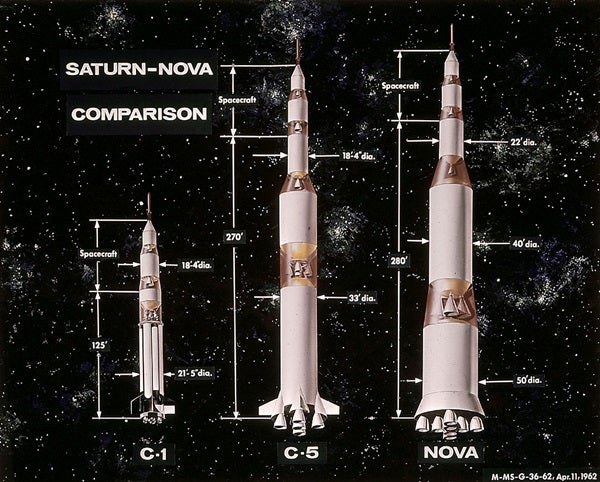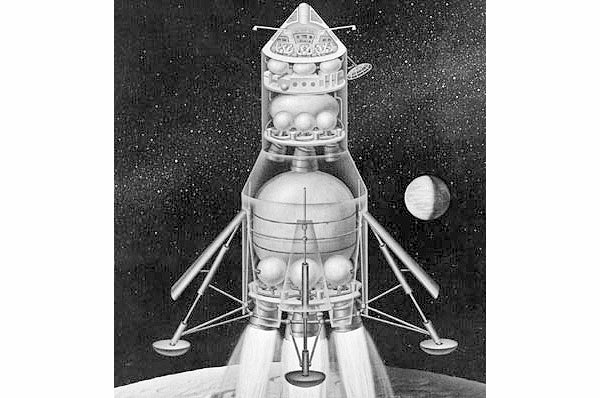Before NASA decided to launch Apollo on the Saturn V rocket, the agency considered a larger rocket called Nova. The necessary launch vehicle for the heavier Direct Ascent mission profile, this mind-blowingly large rocket was never built.
Because Direct Ascent was NASA’s preferred mission mode in the earliest days of Apollo, Nova was the frontrunner for launch vehicle in 1958. But when NASA realized it could launch the same spacecraft on two smaller — and simpler — Saturn rockets (Earth Orbit Rendezvous mode), the larger, more complicated Nova design was pushed to the back burner. It stayed there when NASA later settled on Lunar Orbit Rendezvous for Apollo; there was just no need for a rocket as big as Nova.
Nevertheless, Nova was poised to make a comeback after Apollo. As they looked ahead, program managers and engineers expected this rocket to be the workhorse that would extend humanity’s reach to the other planets and deep into the solar system after landing on the Moon. Of course, this never happened.
Toward the end of the 1960s, the rising cost of Apollo brought a new emphasis on reusable rockets; rather than develop a larger and more powerful launch vehicle, NASA was instead directed to develop the space shuttle system in the 1970s.











